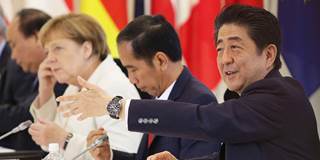Since the global financial crisis of 2008, monetary policy has borne much of the burden of sustaining aggregate demand, boosting growth, and preventing deflation in developed economies. Eight years later, its time to pass the baton to fiscal policy.
NEW YORK – Since the global financial crisis of 2008, monetary policy has borne much of the burden of sustaining aggregate demand, boosting growth, and preventing deflation in developed economies. Fiscal policy, for its part, was constrained by large budget deficits and rising stocks of public debt, with many countries even implementing austerity to ensure debt sustainability. Eight years later, it is time to pass the baton.
As the only game in town when it came to economic stimulus, central banks were driven to adopt increasingly unconventional monetary policies. They began by cutting interest rates to zero, and later introduced forward guidance, committing to keep policy rates at zero for a protracted period.
In rapid succession, advanced-country central banks also launched quantitative easing (QE), purchasing massive volumes of long-term government securities to reduce their yields. They also initiated credit easing, or purchases of private assets to reduce the costs of private-sector borrowing. Most recently, some monetary authorities – including the European Central Bank, the Bank of Japan, and several other European central banks – have taken interest rates negative.

NEW YORK – Since the global financial crisis of 2008, monetary policy has borne much of the burden of sustaining aggregate demand, boosting growth, and preventing deflation in developed economies. Fiscal policy, for its part, was constrained by large budget deficits and rising stocks of public debt, with many countries even implementing austerity to ensure debt sustainability. Eight years later, it is time to pass the baton.
As the only game in town when it came to economic stimulus, central banks were driven to adopt increasingly unconventional monetary policies. They began by cutting interest rates to zero, and later introduced forward guidance, committing to keep policy rates at zero for a protracted period.
In rapid succession, advanced-country central banks also launched quantitative easing (QE), purchasing massive volumes of long-term government securities to reduce their yields. They also initiated credit easing, or purchases of private assets to reduce the costs of private-sector borrowing. Most recently, some monetary authorities – including the European Central Bank, the Bank of Japan, and several other European central banks – have taken interest rates negative.